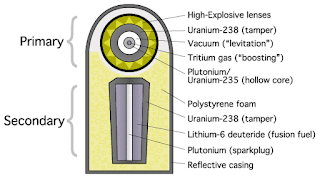Captain Justine Mingana sat cross-legged in her command chair, perusing updates on a tablet handed to her by Commander Povich, her Second. She pressed her lips in approval. Shipwide systems. Check. Full staff in every department. Check. No disciplinary issues. Check. Non-crew personnel present, accounted for and, sufficiently content. No easy task in that area, but nevertheless, check.
Suppressing a tedious yawn, she handed the tablet back to Povich and surveyed the bridge. Officers and specialists sat at their stations, bathed in the ambient glows of data-filled interfaces. Multiple screens covered a large section of bulkhead in a vivid panorama of images.
Mingana idly brushed over the images, settling on one, a star chart. She tapped a prompt on her chair's armrest, highlighting and enlarging the chart.
A blinking diamond shaped icon representing her ship, the UNSS Horseman, inched languidly across a realistic star field. Lines, place names, and calculations covered the field and in the upper right corner a planet floated, rendered in full topographical detail.
“It won't be long, Captain,” Povich commented, his deep, thrumming voice massaging Mingana's ears. The man would have made a perfect voice-over artist.
“No,” the captain agreed. “It won't be long at all. What is the status of our...package?”
“Mint condition, Captain. At least according to what I was told. Ready to deploy at a moment's notice.” Povich shrugged. “From my understanding, the targets will never know what hit them.”
Mingana tried with effort to match her Second's sentiment. “Yeah. That was my understanding, too.” She gave Povich a wry glance and stood. “The bridge is yours, Commander. I'll be in my office catching up on reports.”
“Of course, Commander.” Povich seated himself in the captain's chair as Mingana headed toward the bridge exit.
Just as she was leaving, Three tall figures with faces vaguely suggestive of felines stepped into the bridge.
The central figure wore a draping green silken robe that seemed to cast a shimmer that had little to do with the moderately bright light bars lining the bridge ceiling. Gold colored glyphs were etched along the being's red toned jawline, markings of status in his culture. The haughtiness in his bearing revealed how insufferably elevated that status was.
Mingana groaned internally.
The beings flanking the green-robed dignitary wore gray combat armor with large snub-nose blasters magnetized to their hips.
In her six years as starship captain, Mingana never allowed guests, human or otherwise, to be armed. U.N. Command overruled that prohibition in this case. The way the U.N. sucked up to these aliens had rankled her long before she was sent on the current mission. Mingana, of course, bottled her feelings on the matter and feigned her usual pleasant disposition at the sight of these guests. “Duke Rassellin, forgive me. I was not expecting you on the bridge. You did not make an announcement.”
Mingana stressed that last sentence as pointedly as she could without breaching the boundaries of courtesy. Important as the U.N. deemed Rassellin, that did not give him license to wander around her ship with his armed goons at will as if he belonged.
“I wanted to see where we were in our journey, Captain.” Rassellin spoke unapologetically, with the well oiled arrogance of an aristocrat accustomed to following his own dictates and answering to no one he considered an inferior. He peered down upon the human captain from his towering height, his leathery face highlighted by eyes the color of sun-dappled honey. “So, Captain. What is our progress?”
“We just entered a nebula we call the Adolphi,” said Mingana, keeping her tone even. “That places us 320 light years past the half way point and that much closer to our destination.” She eased past Rassellin, stepping around his immobile guards. “My Second will fill you in on the details.”
Rassellin cocked his head. “Captain, where are you going?”
Now, he was questioning her movements on her own ship? It was all Mingana could do to keep from issuing this pompous ass the dressing down of a lifetime. Instead...”I have important business to attend to. Do you you require anything of me at this time?”
The Duke interlaced his ring bedecked fingers. “No. It's just that you leave the bridge quite frequently. On a Consortium ship, the captain never departs the bridge in the middle of a duty shift.”
Mingana shrugged. “Well, Duke Rassellin. As you have obviously noticed, an Earth ship captain enjoys greater prerogative, less restriction. If you'll excuse me.” She turned her back on the aliens and walked leisurely down the corridor.
***
The captain's office was located between Bridgespace and Engineering Central, the ship operations office. The location kept the captain in close proximity to the most relevant areas of the ship.
Mingana stepped into her office and the walls lit up with interfaces linking to various departments. She eased down in her chair and pressed a tab on her desk console. A screen unfolded before her, bearing the face of a square jawed man with dark brown eyes.
“Captain,” said the officer, with a just enough of a whimsical air to scrape a bit of edge off of his formality. “What can I do for you?”
“Nothing special, Kochran, just looking for an update on those modifications.”
Lt. Commander Kochran, head of Engineering raised a confident brow. “Installation of the impulse booster proceeds according to schedule. By this time tomorrow, expect a twenty-five percent increase in sublight velocity.
The corners of Mingana's mouth lifted in approval. “That's what I wanted to hear. And the other...matter? How far along are you on that?”
Other than a furtive glance behind him, Kochran's exuberant manner never slackened. “The warheads' guidance mechanisms have been examined.” That was all the engineering officer had to say on the matter.
Satisfied, Mingana left it at that. “Thank you, Joel. I'll let you return to your duties.”
“Or you could give me the rest of the day off so I can finish that bottle in my quarters,” Kochran quipped.
“Not until the mission is over,” said the captain with a wry smile. “If we succeed, you can share that bottle with me.”
“Deal,” Kochran replied, earnestness seeping into his joviality. His image vanished from the screen. A heartbeat later, the screen winked out of existence and Mingana leaned back in her chair, contemplating events to come...until her thoughts drifted to the past...
***
The noon sun glowed like a hot ember when the ships appeared over the city. Justine jumped with joy that precious Saturday when she saw them. She turned 14 on that day and there could not have been a better birthday present. Justine absorbed science fiction like a sponge and those ships...spaceships! Had to be! Those spaceships were the realization of her burning desire to make first contact with aliens! Real live aliens! Her parents could only wish that she channeled a smidgen of her over-abundant enthusiasm for tales of the fantastic into her studies.
The ships were large, hauntingly beautiful ovals and octagons and tetrahedrons with glazed surfaces the color of topaz. Even in a haze-blanketed sky, the strange vessels displayed an uncanny vividness that reflected none of the pollution-filled murk surrounding them.
From Justine's vantage point, the closest one was the size of a baseball. Her father worked as a maintenance man in one of the downtown towers. What a breathtaking view of the ships he must have had! She couldn't wait for him to get home to talk about it.
“Justine get in here!' Her mother insisted in an agitated whisper, as if the alien ships would be alerted to her presence if she spoke an octave louder. She stood in the doorway of a house much too small to accommodate a family of five. Yet, it was one of the larger units in the shanty district. Justine's younger brothers clung to her mother's skirt, their faces an endearing blend of wonder and trepidation.
“There's nothing to worry about, Ma,” Justine remarked with her usual teen bravado. “They're friendly.”
She had nothing to base that claim on, just an optimistic hunch.
Her mother thought otherwise and demanded Justine come inside. Reluctantly she obeyed.
Days later, Justine's hunch proved valid. The aliens met Earth's leaders at the United Nations building, introducing themselves as the Calaar. The Calaar proclaimed their peaceful intentions and a desire to forge a relationship with Earth that promised tremendous benefits for humankind.





